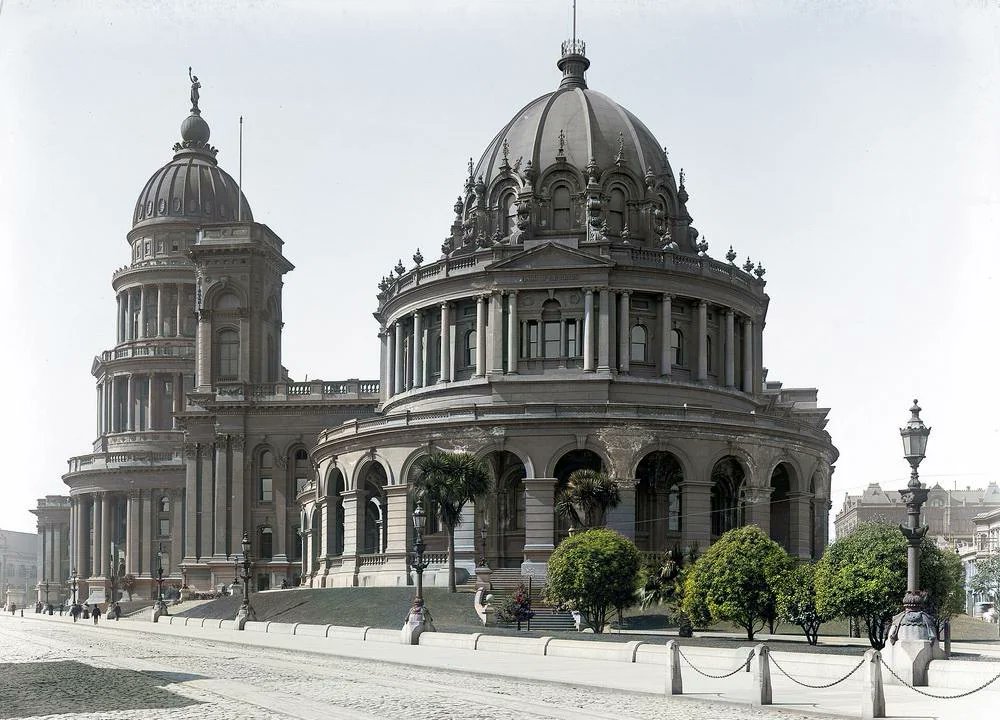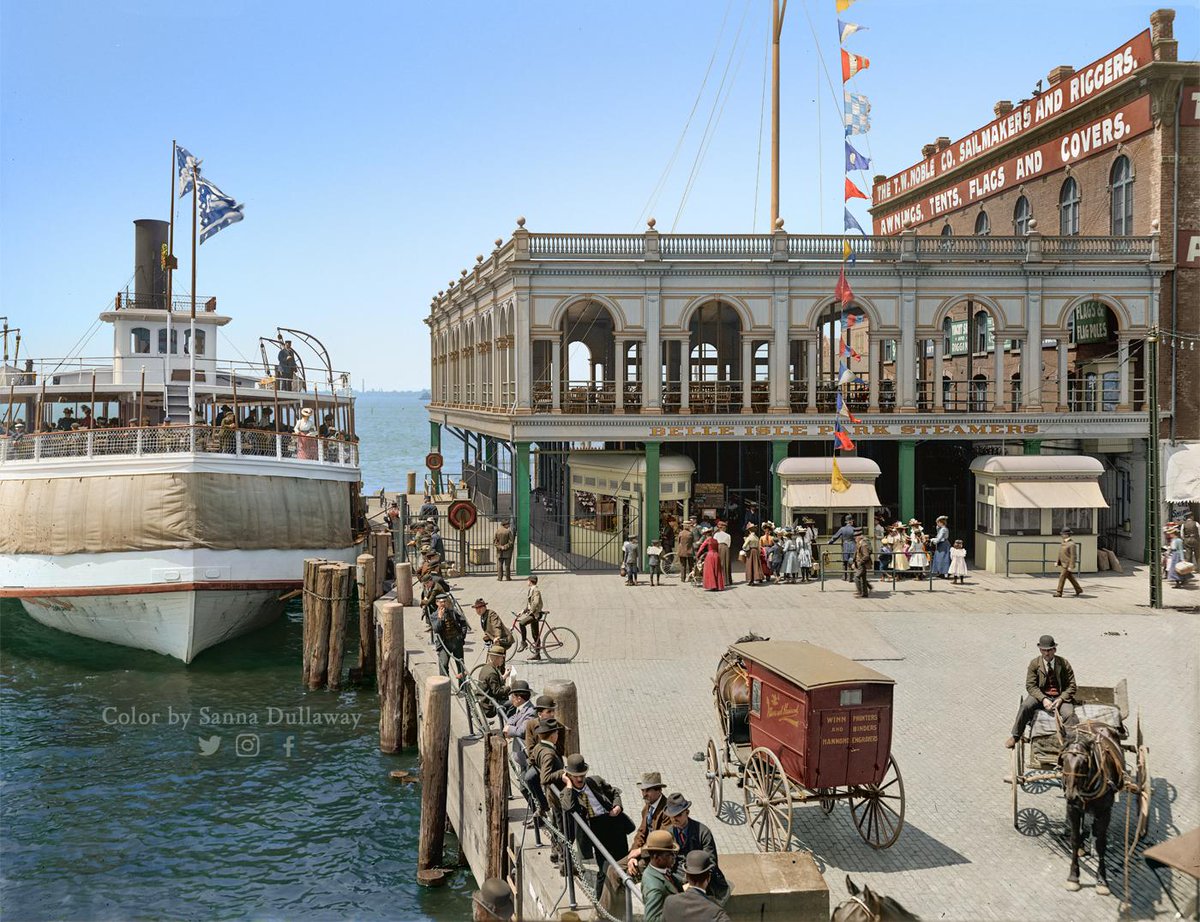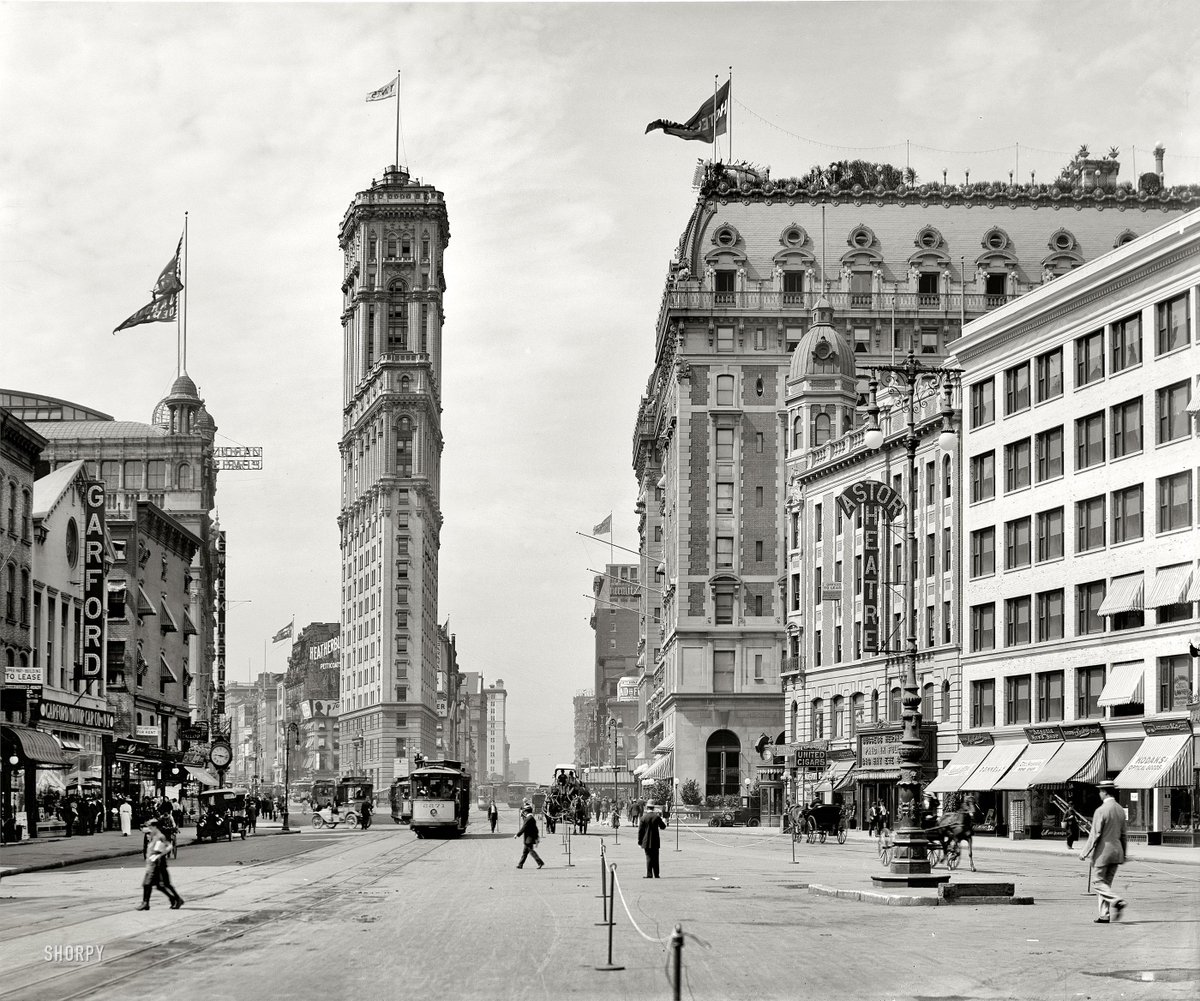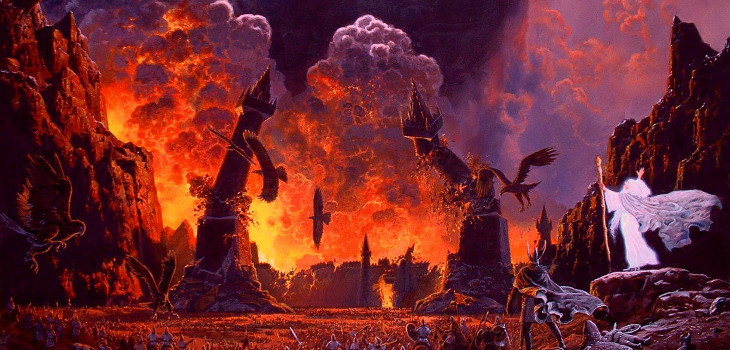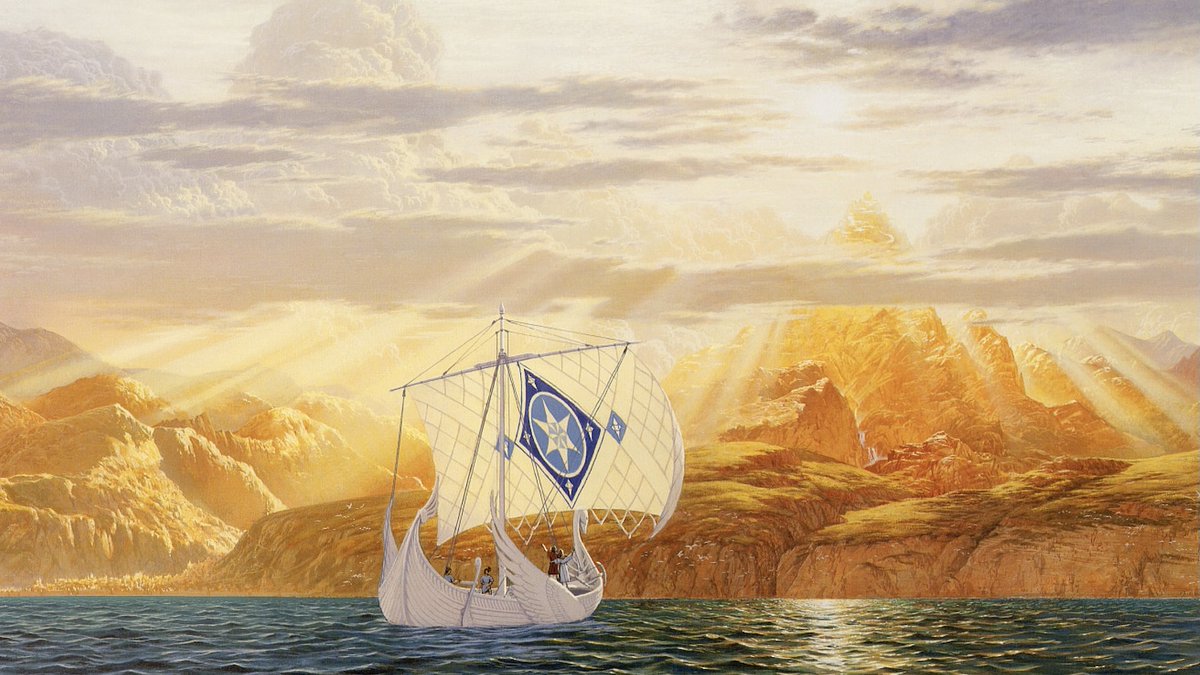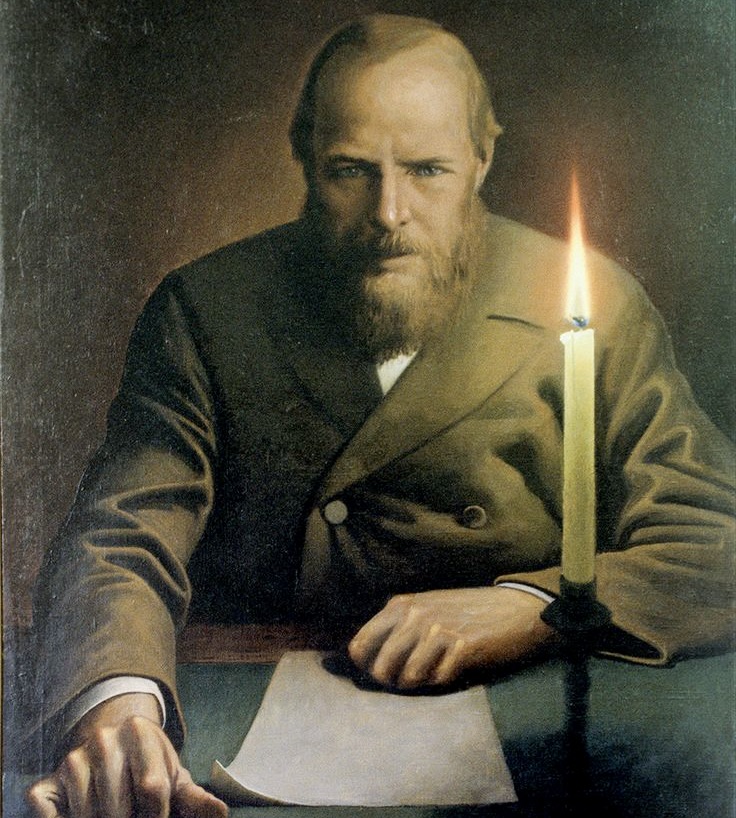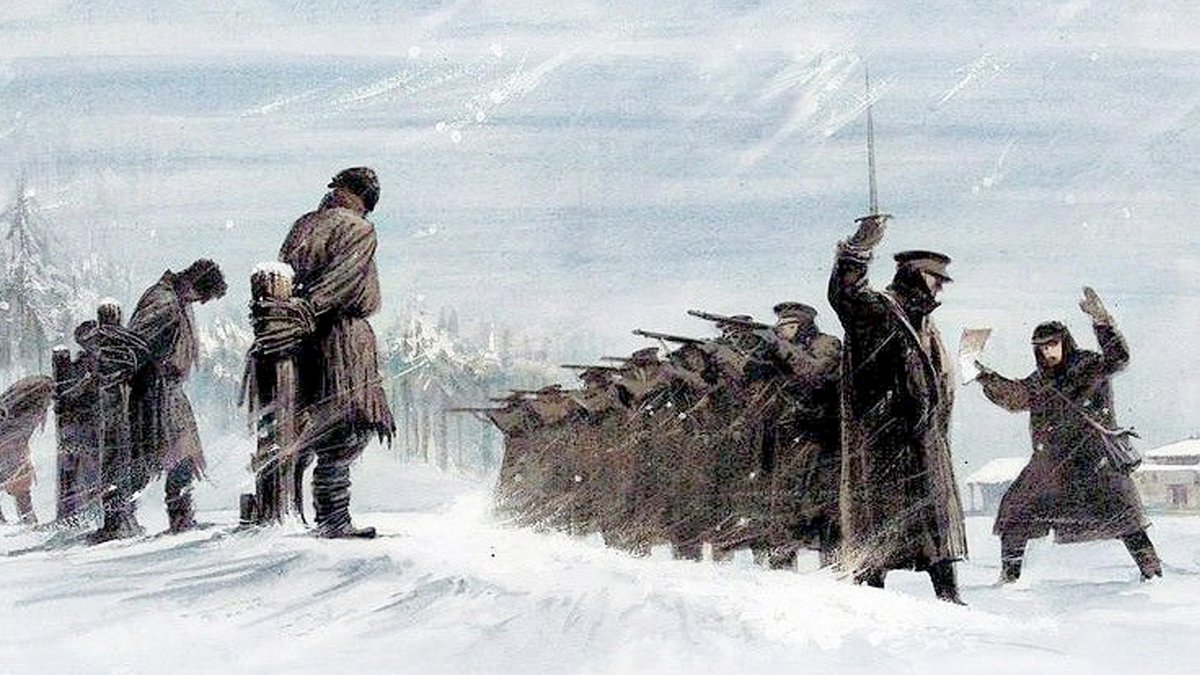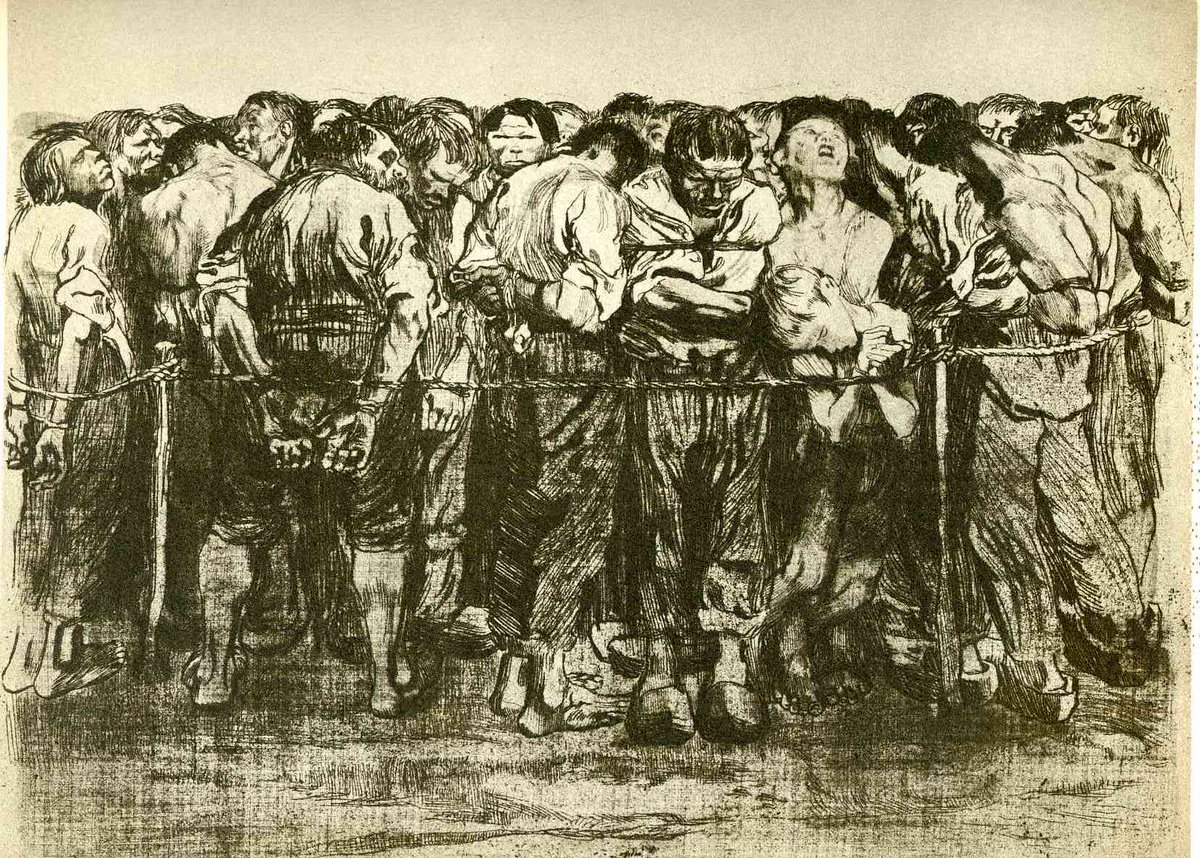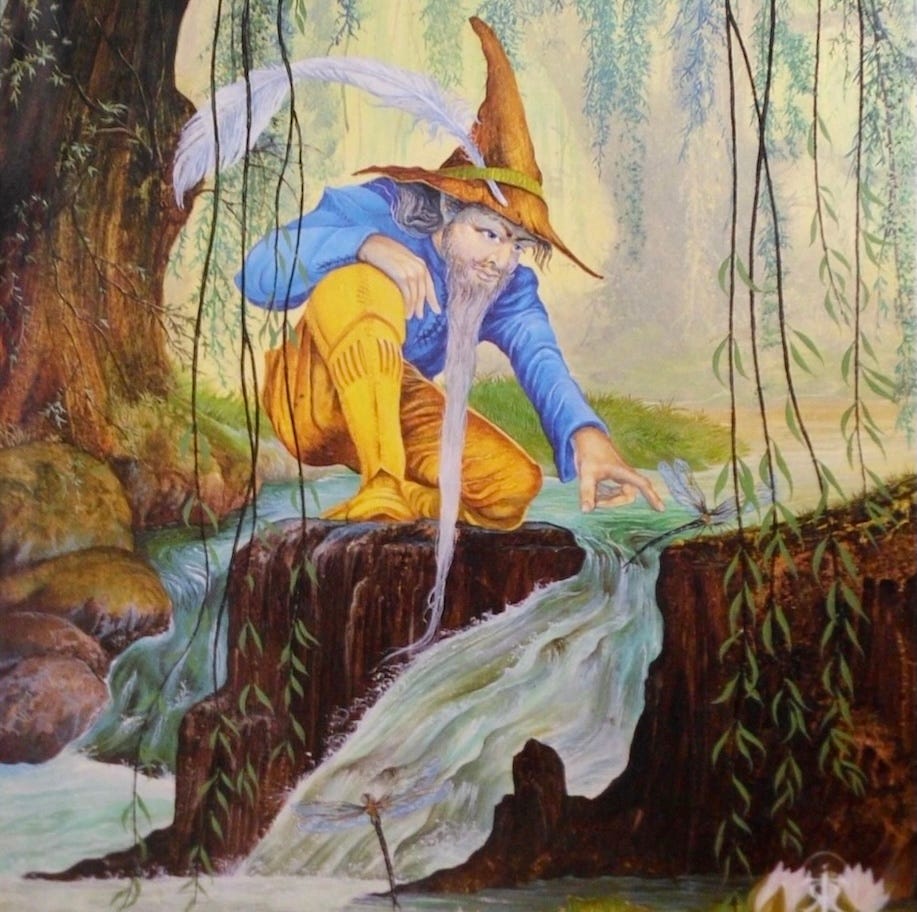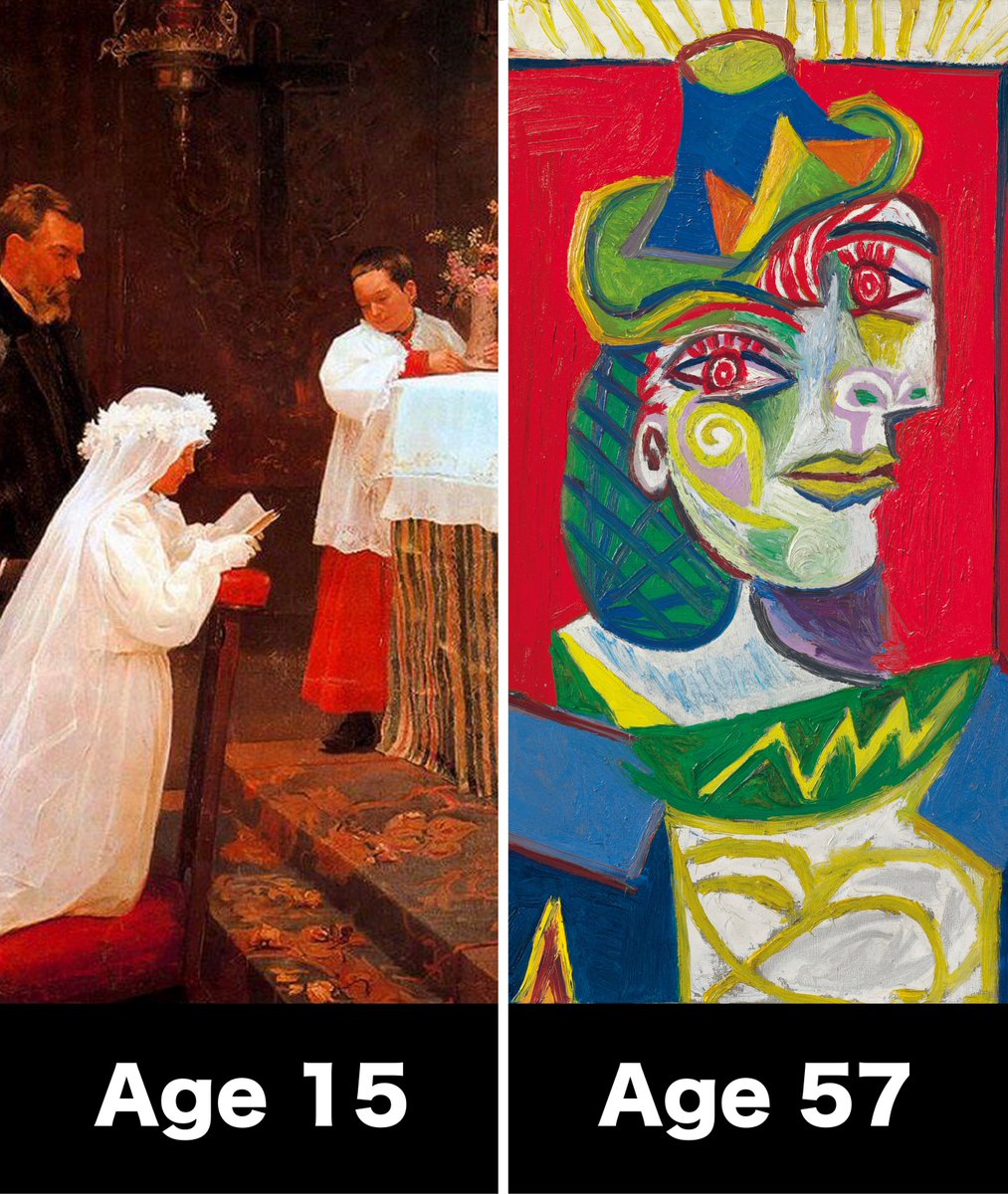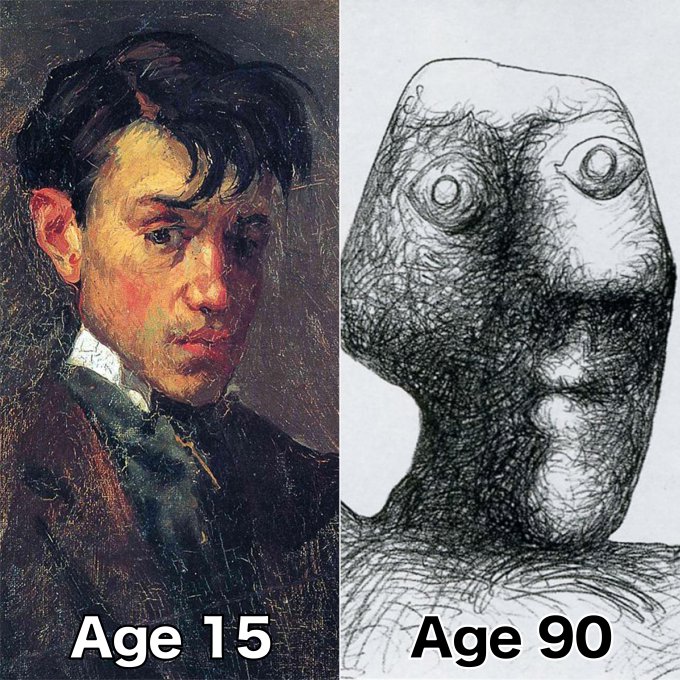This is what American cities looked like a century ago (and what happened to them)... 🧵
1. Saratoga Springs, New York (1915)
1. Saratoga Springs, New York (1915)
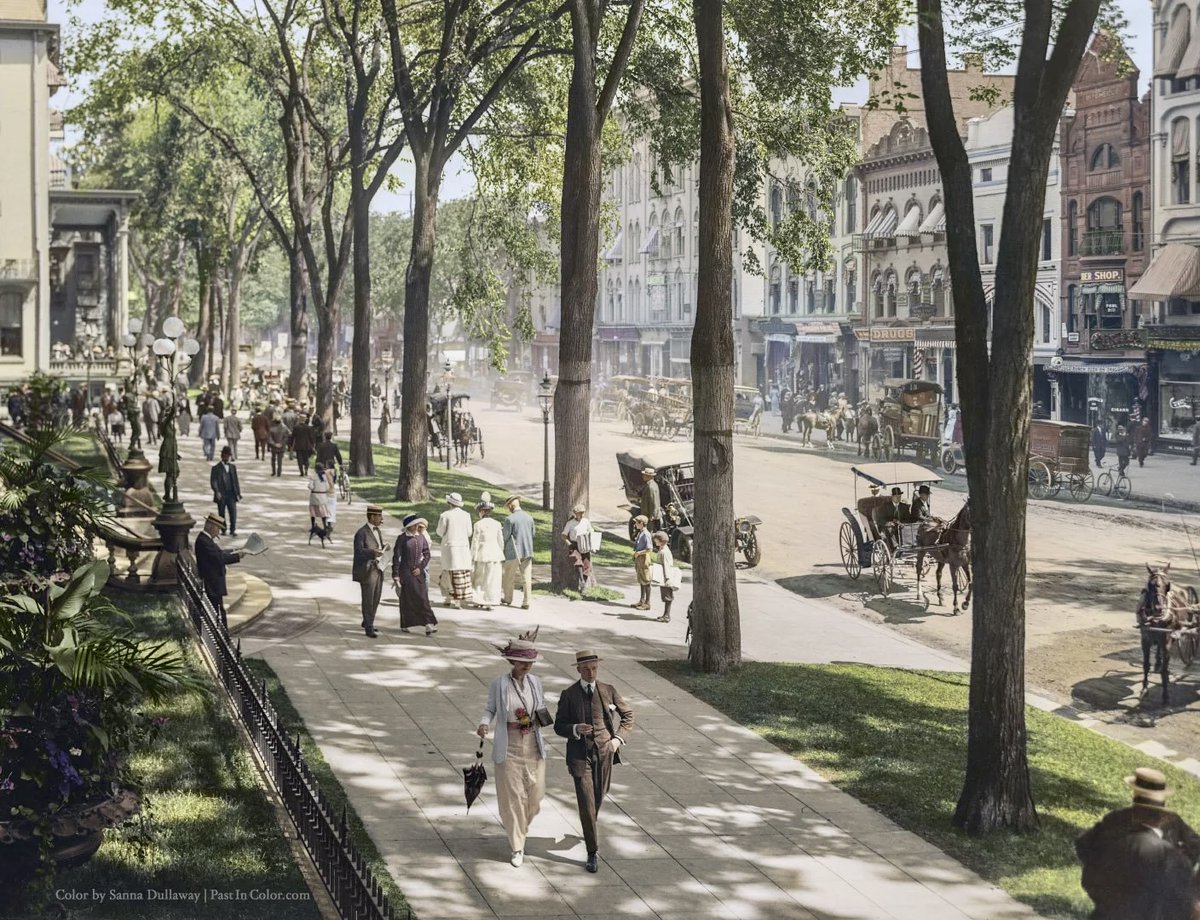
Victorian-era Broadway of Saratoga Springs was immaculate, although it still looks quite similar today — minus some of the elegant facades and verandas.
But other places weren't so lucky...
But other places weren't so lucky...
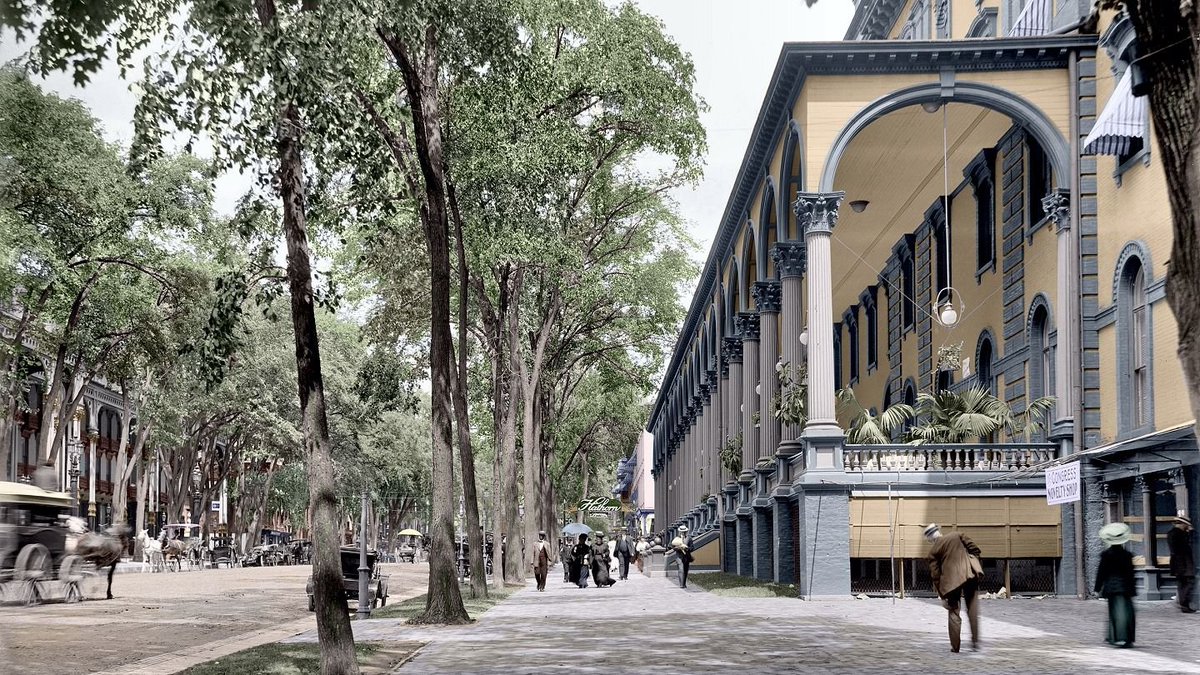
2. San Francisco, California (c.1876)
Most of San Fran's Victorian downtown was lost in the great earthquake (and fires) of 1906. Before then, it was routinely compared to Europe's finest metropolises: the "Paris of the Pacific"...
Most of San Fran's Victorian downtown was lost in the great earthquake (and fires) of 1906. Before then, it was routinely compared to Europe's finest metropolises: the "Paris of the Pacific"...
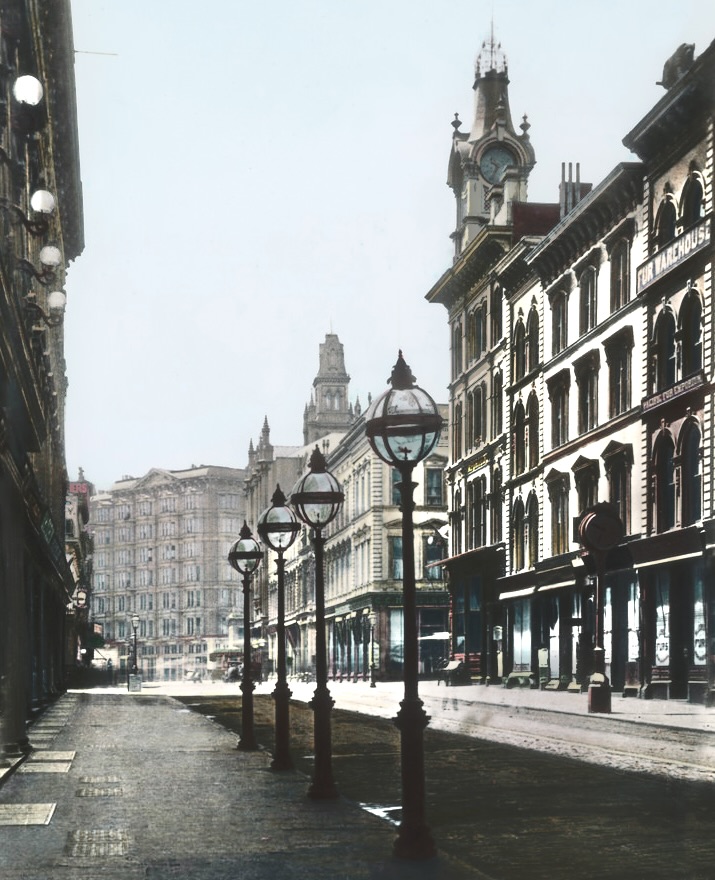
3. Detroit, Michigan (1901)
You'll be surprised to know Detroit was sometimes called the "Paris of the Midwest" — due to its French origins, but also its elegant architecture that sprung up during its prosperous years...
You'll be surprised to know Detroit was sometimes called the "Paris of the Midwest" — due to its French origins, but also its elegant architecture that sprung up during its prosperous years...
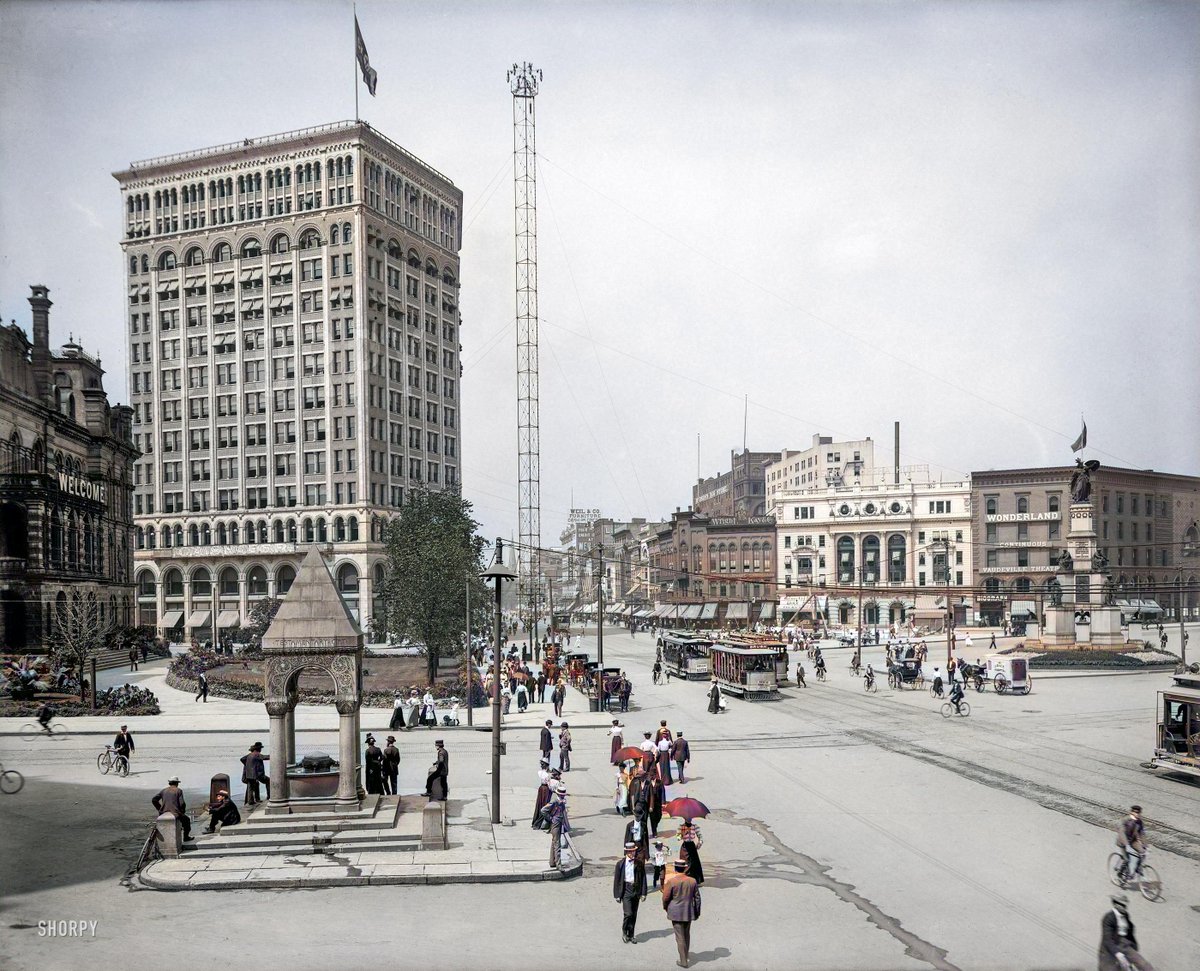
4. Los Angeles, California (1928)
Downtown L.A. in the Victorian era was dramatically different. This entire district of 19th century buildings was razed to "renew" the Civic Center neighborhood...
Downtown L.A. in the Victorian era was dramatically different. This entire district of 19th century buildings was razed to "renew" the Civic Center neighborhood...
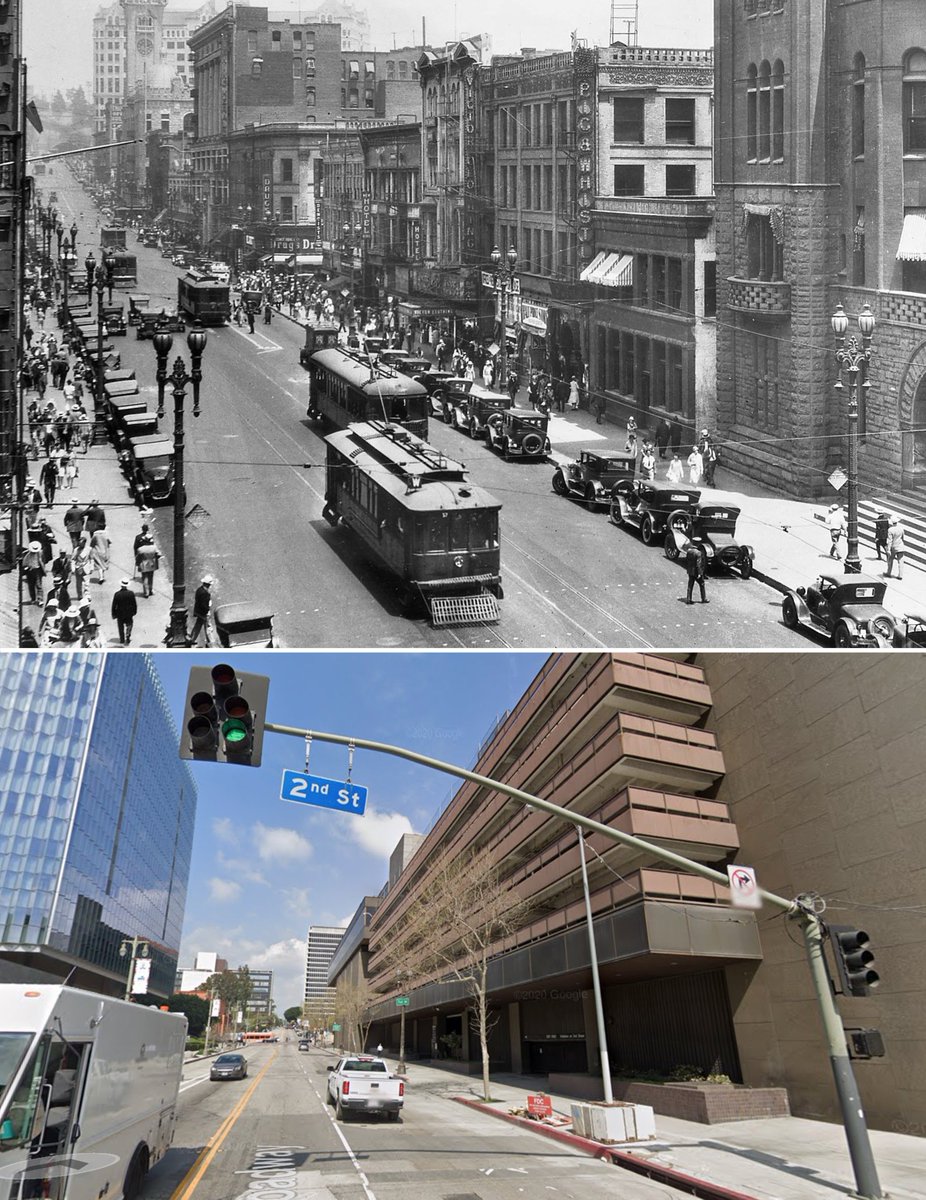
...and this was Long Beach in 1910. There was a famous amusement zone called "the Pike" that was demolished in 1970s. 
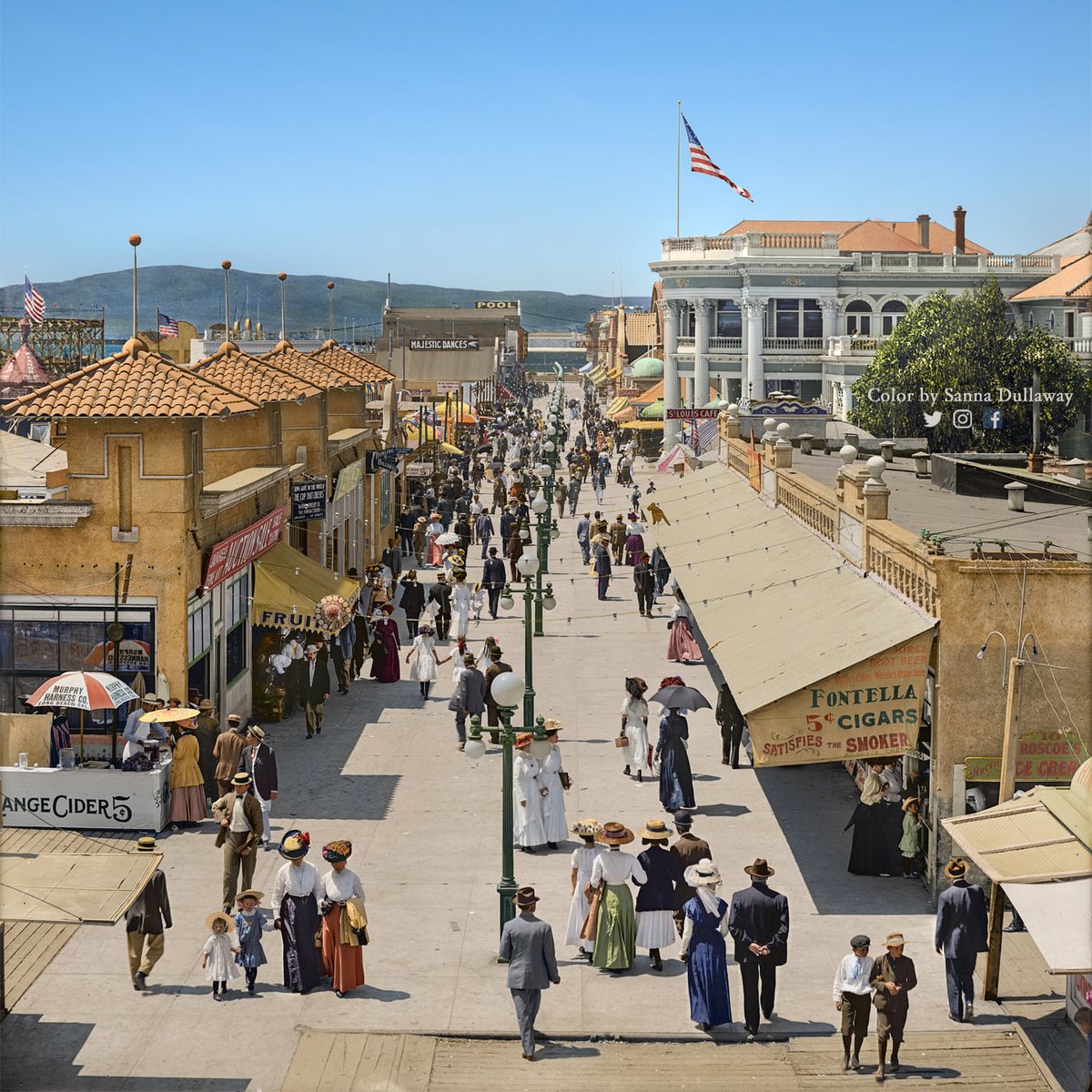
5. Kansas City, Missouri (1906)
Then you had inner cities that were lost to the great highways. Entire districts of Kansas City were infamously stripped out for the interstate.
Then you had inner cities that were lost to the great highways. Entire districts of Kansas City were infamously stripped out for the interstate.
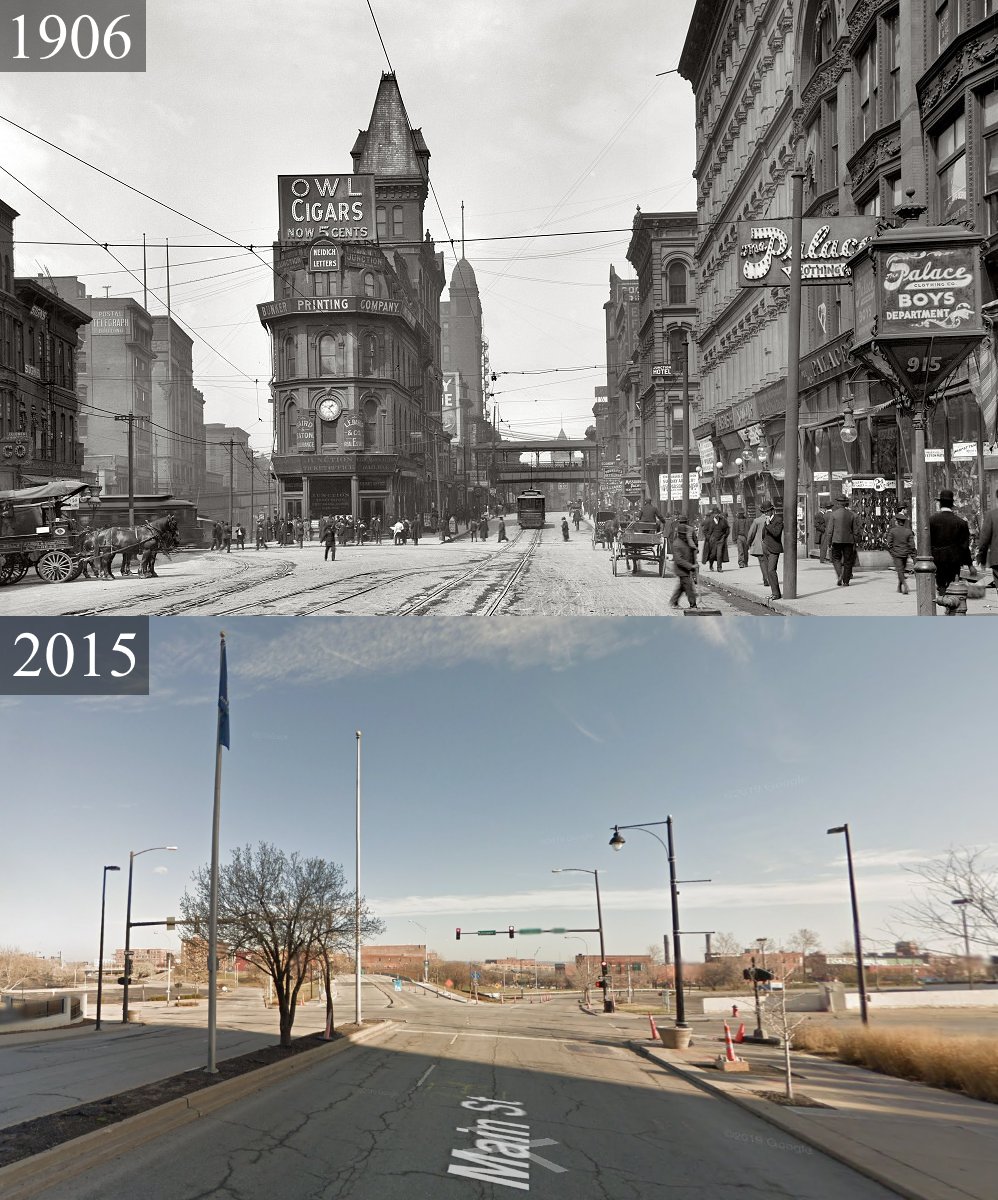
6. Cincinnati, Ohio (1910)
Suburbanization and deindustrialization cratered populations of cities like Cincinnati, which were once bustling. Over 500k people lived there in 1950 — and only 300k today...
Suburbanization and deindustrialization cratered populations of cities like Cincinnati, which were once bustling. Over 500k people lived there in 1950 — and only 300k today...
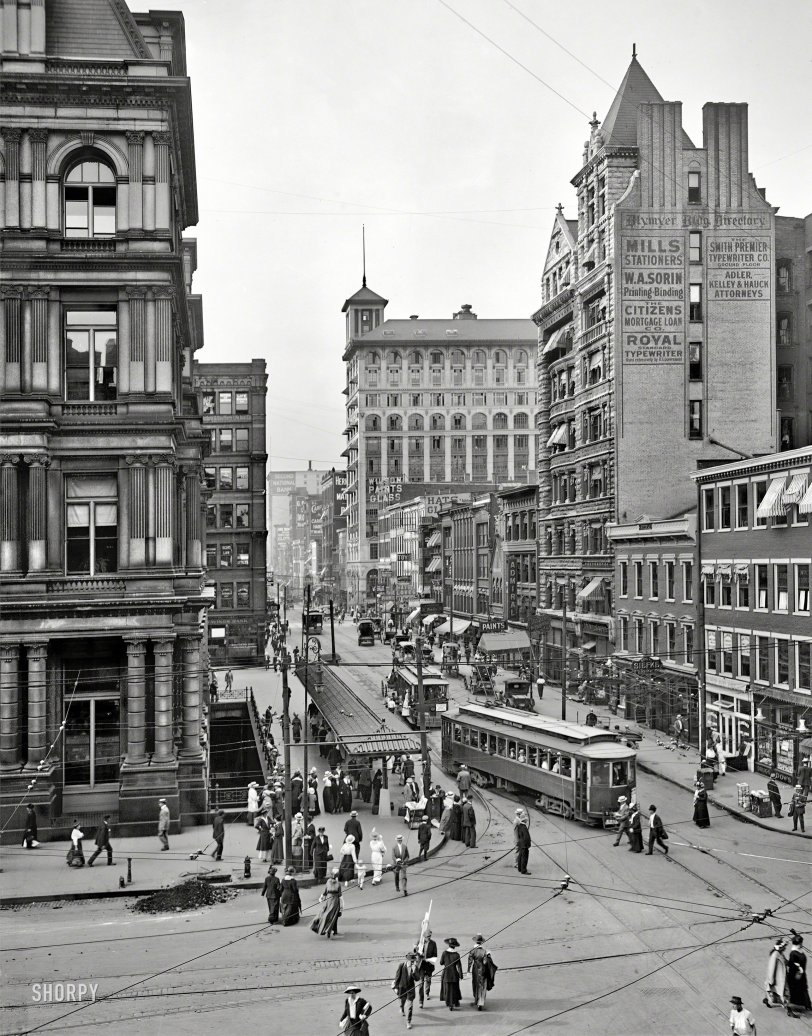
...and the new interstates played no small part in this, in some cases displacing tens of thousands of people. 
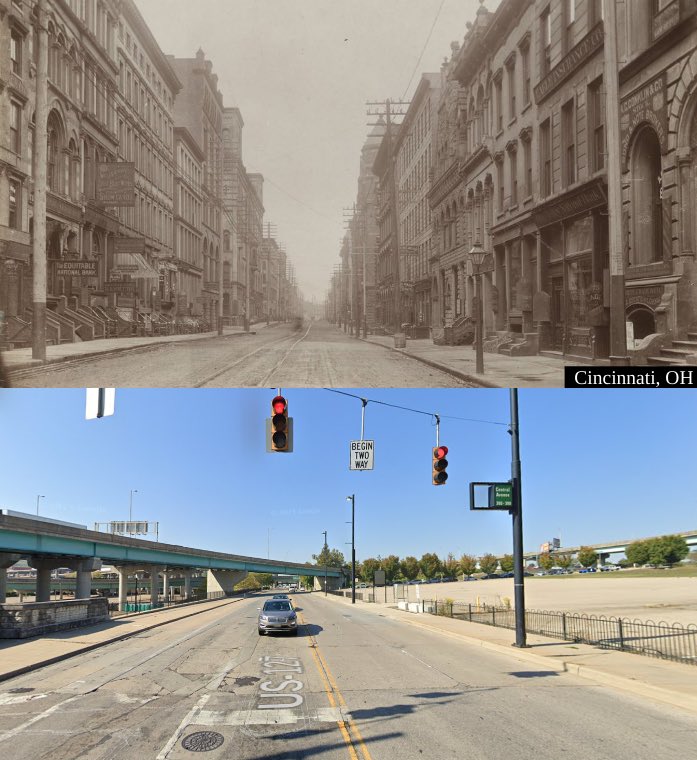
7. New York City, New York (1916)
Most major cities had street cars that carried people to work — even New York. The City Hall Post Office in this image also no longer exists: it was considered a "monstrosity" back then and razed in 1939.
Most major cities had street cars that carried people to work — even New York. The City Hall Post Office in this image also no longer exists: it was considered a "monstrosity" back then and razed in 1939.
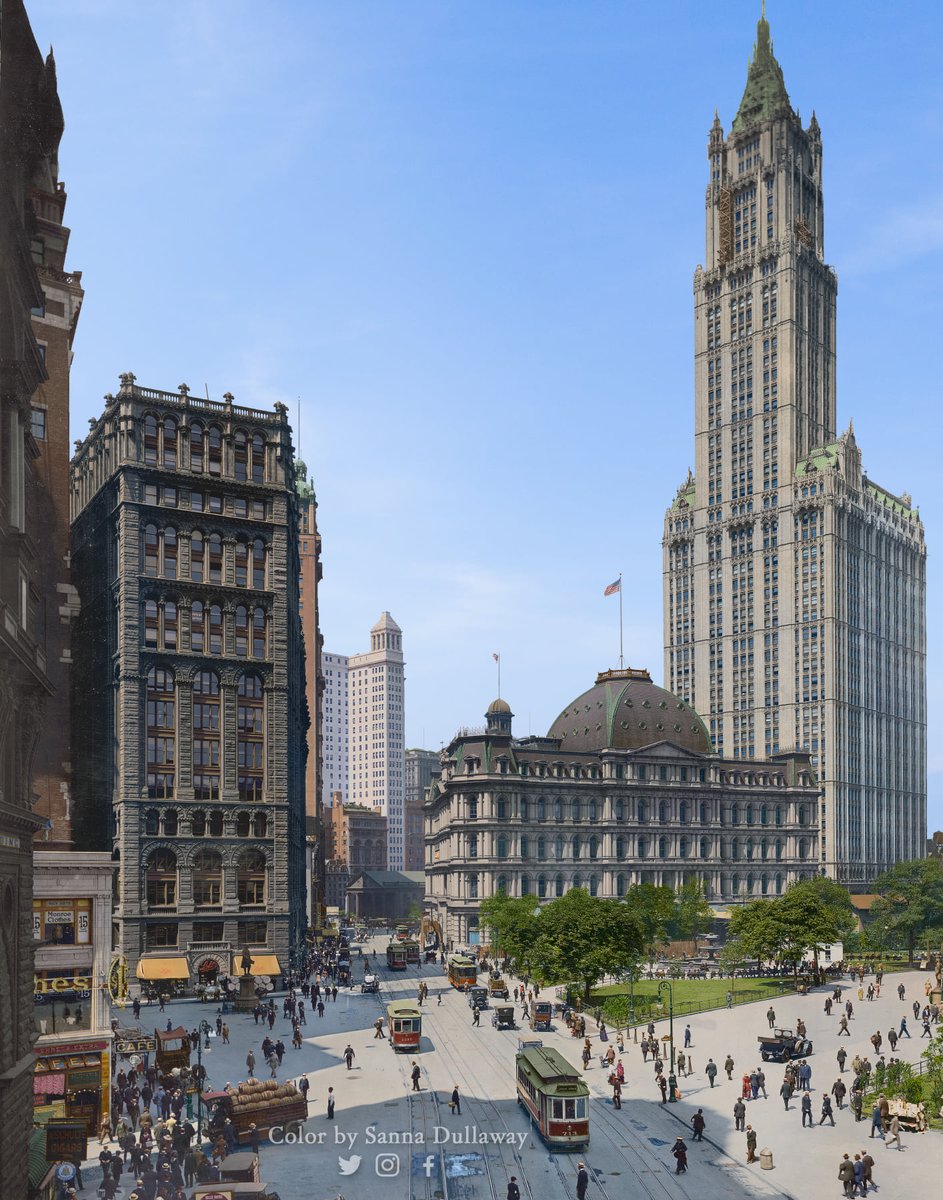
This was Broad Street at the turn of the century. The street was designed with carriages in mind, but people and vehicles shared the space without much regulation at this point... 
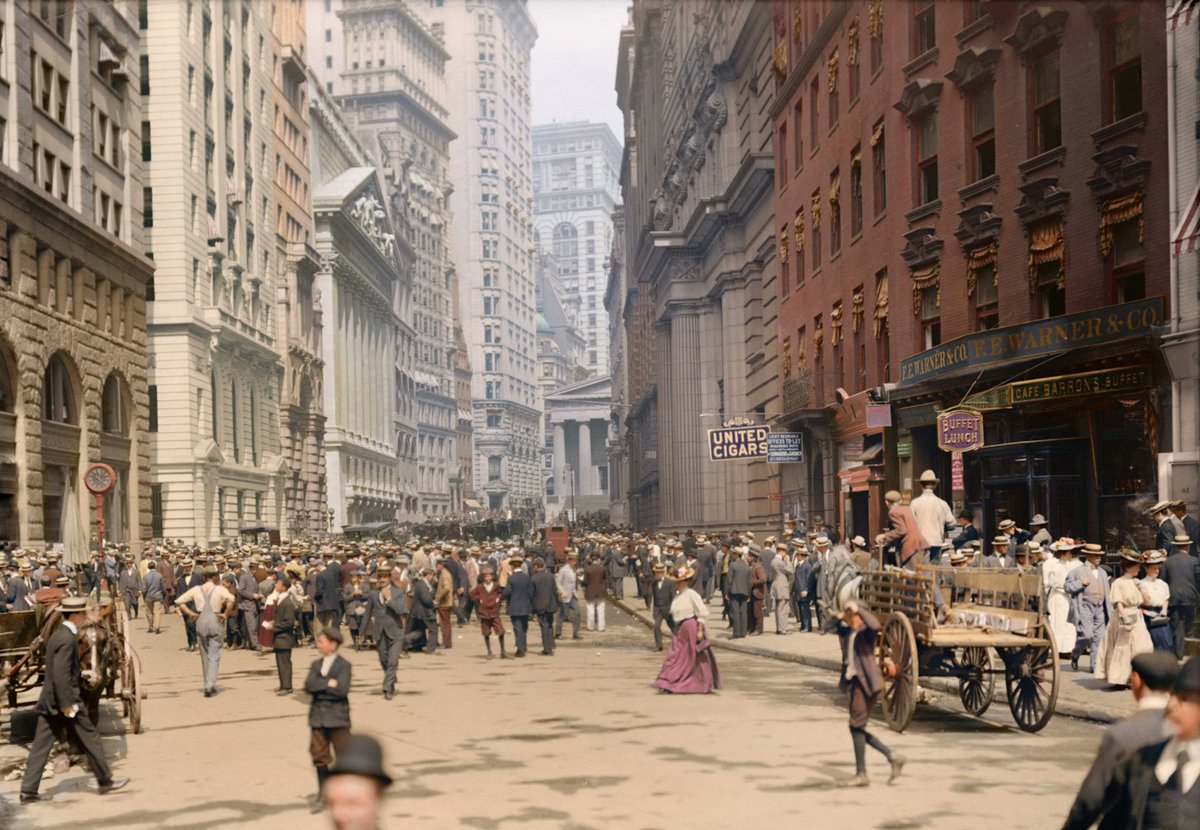
8. Salem, Massachusetts (c.1910)
The railroads were of course a casualty of motorcar dominance. This grand depot in Salem no longer exists.
The railroads were of course a casualty of motorcar dominance. This grand depot in Salem no longer exists.
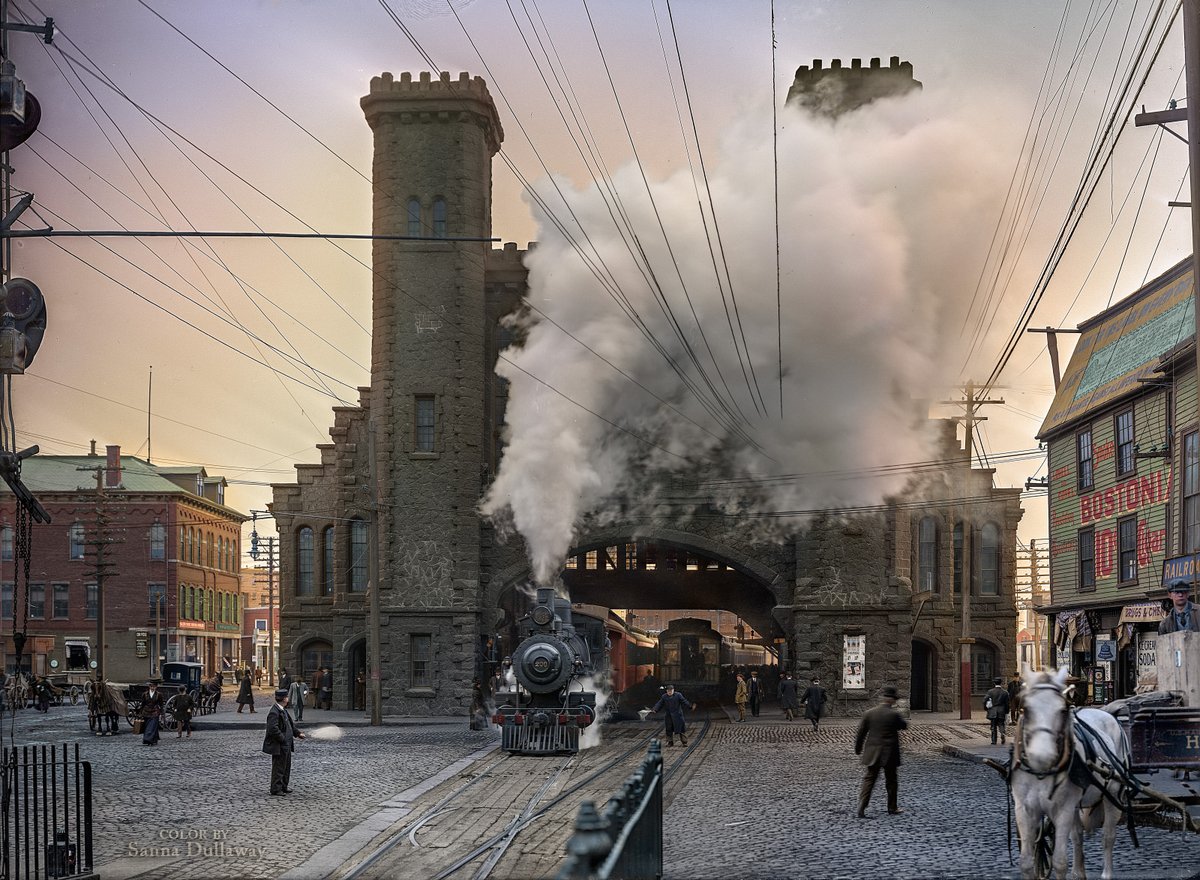
9. Chicago, Illinois (1893)
Several cities transformed themselves for the World's Fairs. Chicago was the most impressive: erecting the mighty "White City" in Jackson Park in just two years.
These were temporary structures, almost all demolished after the event.


Several cities transformed themselves for the World's Fairs. Chicago was the most impressive: erecting the mighty "White City" in Jackson Park in just two years.
These were temporary structures, almost all demolished after the event.
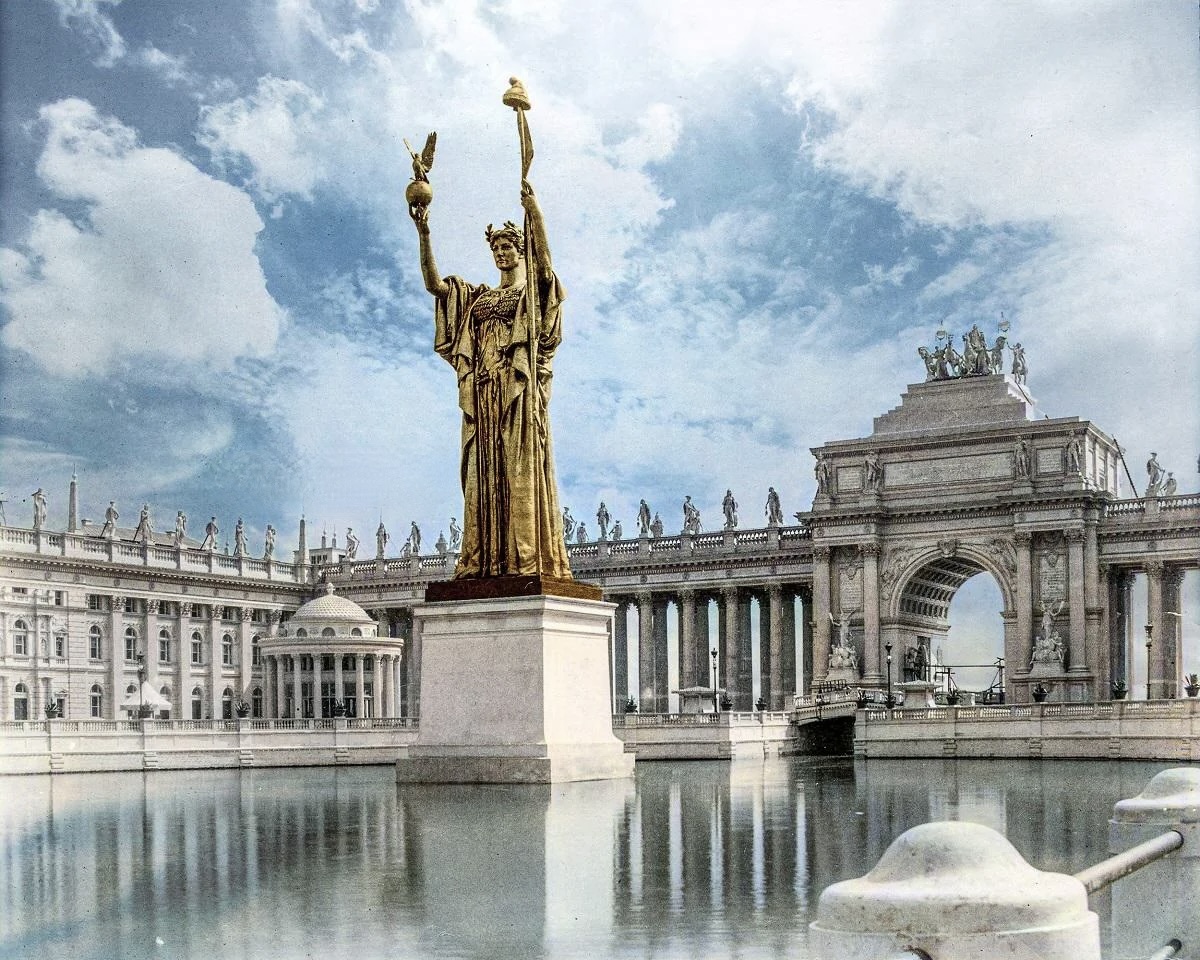
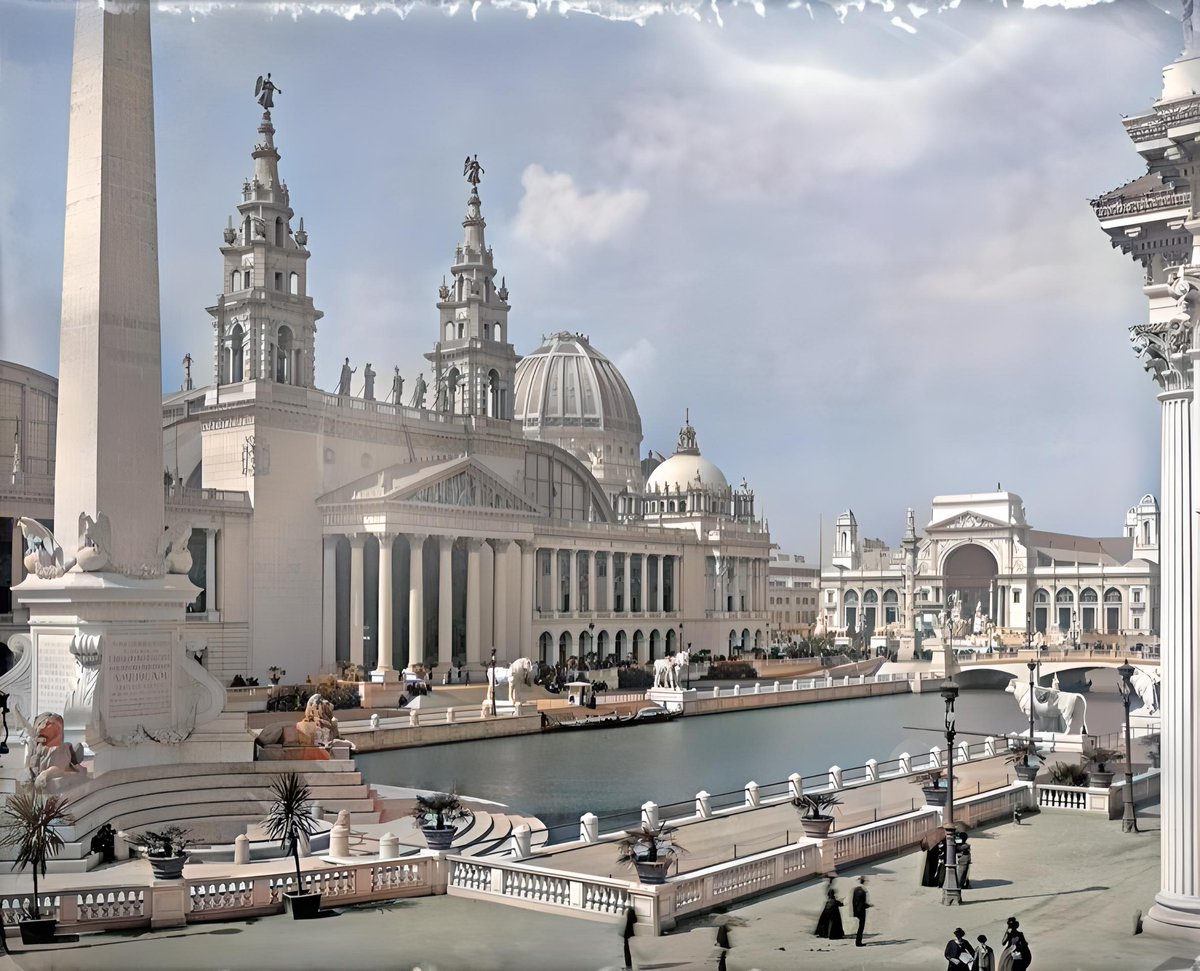
10. Buffalo, New York (1901)
Buffalo is also unrecognizable in photos taken during its Pan-American Exposition. Back then, it was a boom town and powerhouse of industry...
Buffalo is also unrecognizable in photos taken during its Pan-American Exposition. Back then, it was a boom town and powerhouse of industry...
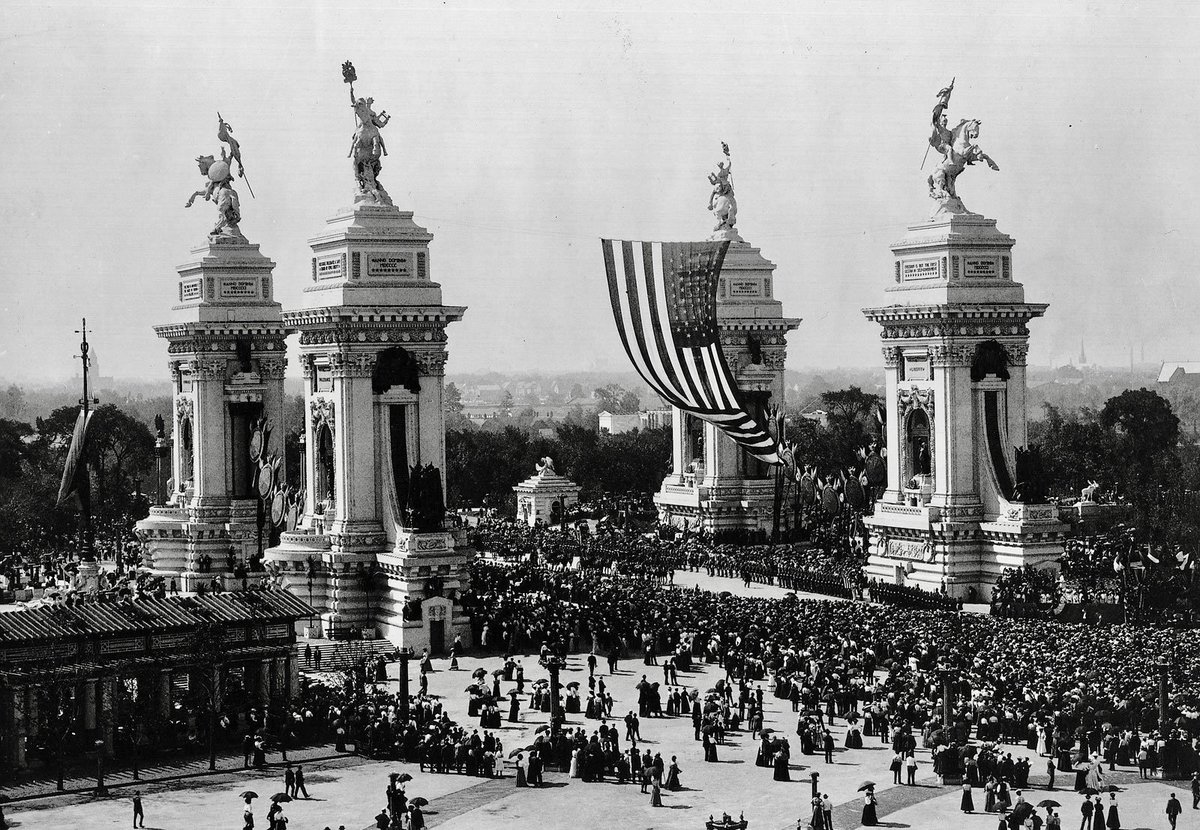
...and downtown was dominated by great buildings like the Romanesque Erie County Savings Bank.
It was later demolished in an "urban renewal" project of the 1960s...
It was later demolished in an "urban renewal" project of the 1960s...
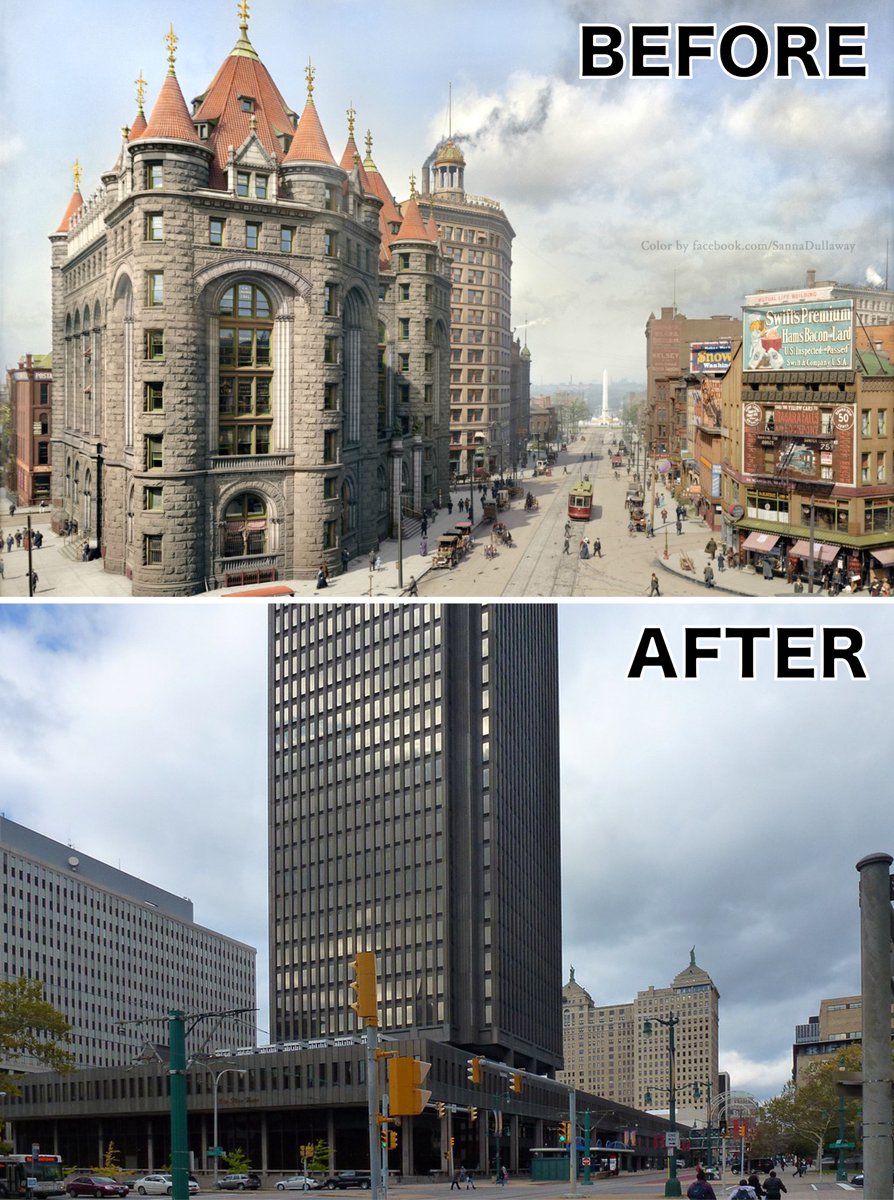
I explore the beauty of the old world in my free newsletter every week — do NOT miss the next one.
50,000+ readers: art, history and culture 👇
culturecritic.beehiiv.com/subscribe
50,000+ readers: art, history and culture 👇
culturecritic.beehiiv.com/subscribe
One more: Philadelphia, Pennsylvania (1907)
One of the many wonderful theaters that were lost — entirely demolished in 1971.
One of the many wonderful theaters that were lost — entirely demolished in 1971.

• • •
Missing some Tweet in this thread? You can try to
force a refresh

